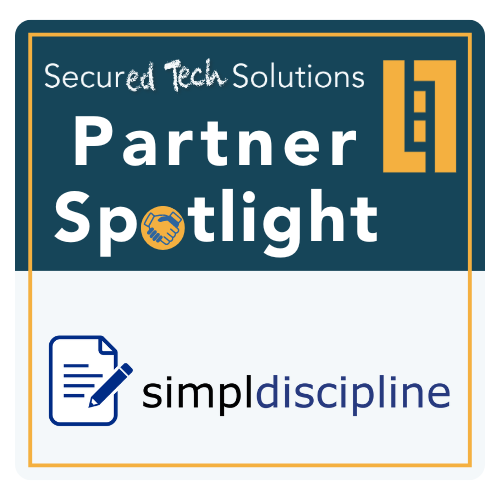October is Cybersecurity Awareness Month, a time when schools and institutions across the country take stock of their digital security practices. For K12 schools, where technology is essential to daily operations, protecting devices and data is more critical than ever. Schools handle a vast amount of sensitive information, student records, personal data, and communications- making them prime targets for cyberattacks.
At Secured Tech, we understand the unique challenges schools face when it comes to managing their technology securely. Our work with K12 schools includes selling and supporting devices, offering repairs, providing software solutions, and ensuring secure end-of-life processes through buyback and e-recycling. But more than just managing devices, our mission is to help schools create a safer digital environment. Here’s how cybersecurity plays into each aspect of device management in schools and how schools can improve their defenses.
The Growing Importance of Cybersecurity in Schools
The increasing reliance on digital tools for learning, combined with limited resources, can leave schools vulnerable to a wide range of cyber threats. From ransomware attacks that can lock down entire school systems to phishing emails targeting unsuspecting staff, the risks are numerous.
A single breach can disrupt learning, compromise sensitive student data, and incur significant recovery costs. In light of these risks, schools need to adopt a proactive cybersecurity strategy, ones that encompasses not only their IT infrastructure but also the devices used daily by students and staff.
Device Management and Security: A Holistic Approach
- Secure Device Deployment - Schools are adopting a wide variety of devices to support learning, from Chromebooks, laptops, iPads, and other mobile devices. But providing students with technology comes with a responsibility to secure these devices from the moment they are issued. Security features like encryption, access controls, and device monitoring should be built into every step of device deployment.
- Repairs with Data Privacy in Mind - Devices inevitably require maintenance or repairs, but ensuring the security of sensitive data during these processes is essential. Whether it's accidental damage or a warranty issue, repairs should never compromise student privacy. Our processes ensure that all devices undergoing repairs are handled in line with data protection protocols, safeguarding any sensitive information stored on them.
- Comprehensive Software Solutions - Managing a fleet of devices across an entire school district can be a challenge, especially when it comes to ensuring they remain compliant with security policies. Schools must regularly update software, monitor device usage, and enforce access controls. Our software solutions help schools manage this process efficiently, allowing administrators to track and maintain devices while reinforcing cybersecurity best practices.
- End-of-Life and Buyback Programs - When devices reach the end of their lifecycle, securely disposing of or recycling them is crucial. Too often, schools overlook the risks associated with improperly discarded devices, which can still hold sensitive data. Through our end-of-life buyback and e-recycling programs, we ensure that all devices are securely wiped of any data before being resold or recycled. This not only protects schools from potential data breaches but also provides an environmentally responsible solution for outdated technology.
Cybersecurity Best Practices for K12 Schools
While managing devices is a critical part of cybersecurity, schools should also consider the broader steps they can take to protect their digital ecosystems. Here are some essential practices every school should adopt:
- Cybersecurity Education for Staff and Students - Cybersecurity begins with awareness. Teaching staff and students about the importance of strong passwords, recognizing phishing attempts, and practicing safe internet behavior is a critical first line of defense. Regular training can ensure that everyone is aware of the most common cyber threats.
- Multi-Factor Authentication and Strong Passwords - Requiring multi-factor authentication for access to school networks and systems provides an extra layer of security beyond passwords. Encouraging the use of strong, unique passwords across all devices and platforms is equally important.
- Regular Updates and Patching - Outdated software is a common target for cyberattacks. Schools must ensure that all devices, from student tablets to administrative systems, are kept up-to-date with the latest security patches. Automating updates where possible can help mitigate the risk of vulnerabilities.
- Secure Data Backups - In the event of a ransomware attack or data breach, having secure backups of important data is essential. Regular backups stored in a secure, offsite location ensure that critical information can be restored without the need to pay a ransom.
- Incident Response Plans - Cyberattacks can happen despite the best preventive measures. That’s why schools should have a robust incident response plan in place, outlining how to contain a breach, notify stakeholders, and recover data. The quicker a school can respond, the less damage an attack is likely to cause.
Conclusion
In today’s educational environment, cybersecurity is not just about the tools we use, it’s about how we use them. The three pillars of cybersecurity are People, Process, and Technology. While they may appear in alphabetical order, this sequence actually reflects the true priority they deserve. Too often, we focus on technology alone, believing that the latest hardware or software can solve all our security problems. But even the most sophisticated technology is only as strong as the people who use it. Without proper processes in place, even the best cybersecurity tools can be rendered ineffective.
The three pillars outlined in the NIST Cyber Security Framework, People, Process, and Technology, act as critical support pillars holding up the overall security structure of any organization. If one of these pillars is weak or improperly established, the entire system becomes unstable, much like a building whose support beams are not firmly in place. Technology, while important, cannot stand on its own; it must be reinforced by well-trained people and robust processes. Without all three pillars working in harmony, the foundation of your cybersecurity efforts will fail to support the weight of growing cyber threats.
This Cybersecurity Awareness Month, let’s shift our focus to the two foundational pillars: People and Process. Schools should prioritize educating their staff and students about cybersecurity best practices, ensuring that everyone knows how to recognize and respond to potential threats. At the same time, it’s critical to establish clear, repeatable processes that guide how devices and data are handled, from deployment to disposal. When these two pillars are strong, technology can truly do its job.
At Secured Tech, we’re committed to helping schools protect their digital environments by supporting all three pillars of cybersecurity. By fostering a culture of security awareness, setting robust processes, and deploying the right technology, schools can create a safer, more secure learning environment for everyone.






